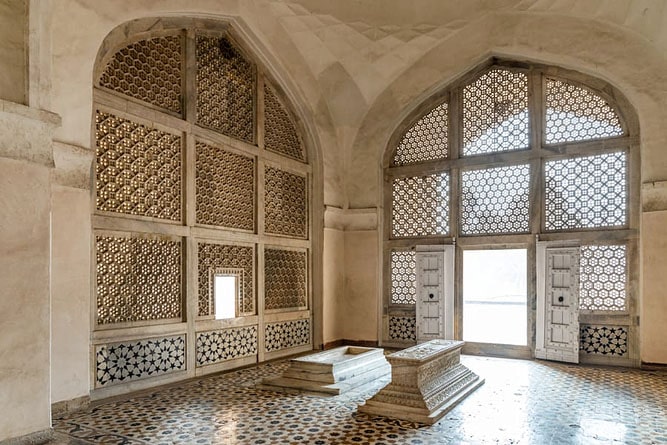Akbar's Tomb (Sikandra)
Historic building in Agra
could-see attraction
Opening hours: dawn-dusk
Address: Sikandra, Agra
Ticket price: Indian/foreigner ₹30/310, video ₹25
Visit duration: People typically spend up to 45 min here
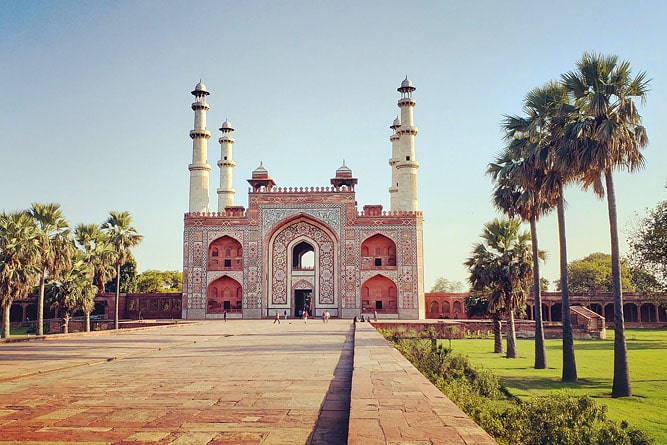
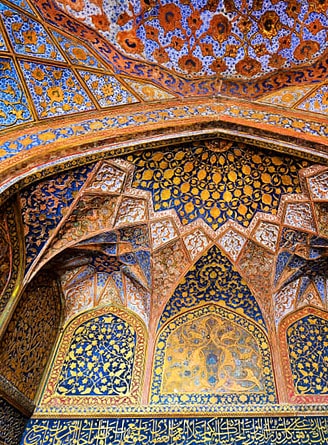
About Akbar's Tomb, Agra
One of the most extraordinary emperors to rule India, Abu’l-Fath Jalal-Ud-Din Muhammad Akbar took his last breath in Agra, India in 1605. The Indo-Islamic architecture of this tomb encases the mortal remains of that mighty Mughal emperor.
The mausoleum is located in Sikandra which is situated at the edges of Agra. This historical site occupies 119 acres of land. Following the trail of the Mathura Road, also known as the National Highway 2, in the northwest direction, you can pinpoint the tomb 8 km away from the heart of the city of Agra.
History of Akbar’s Tomb
The tomb was in construction from 1605 to 1613. The expense for the architecture was around 15 lakhs rupees.
A Hindu ruler Rana Prasad provided refuge to Humayun during his exile and the emperor, Akbar was born in the Rajput Fortress of Amarkot in Rajputana during his father. He was addressed as Akbar the Great. The emperor records the longest and most influential rule among the other Mughal rulers. He was a patron of art and literature and culture. The Mughal Empire attained its zenith both in wealth and magnitude under his authority.
The Mughal emperor died on 27th October 1605. On his departure, his son and successor to the throne, Emperor Jahangir wanted to pay tribute to his father. He memorialised his father’s grave by constructing a tomb on top of it.
During the reign of Aurangzeb, the Mughals were engaged in wars with the Jats. Under the leadership and guidance of Raja Ram Jat, the Jats raided the tomb of Akbar. They plundered the tomb and robbed its regal elegance by stripping the gold, silver, jewels and carpets from the mausoleum. It is also said that they opened the grave and burned the remains of the late king.
When George Curzon was the governor-general of India, he took the responsibility to restore the mausoleum. The restoration of the tomb was completed in 1905. He also restored other historical monuments in Agra along with Akbar’s Tomb. The tomb was reconstructed under the Ancient Monuments Preservation Act. The governor-general explained his project in 1904 as offering tribute to the past so that future generations could witness the great architectural wonders of the Mughal period.
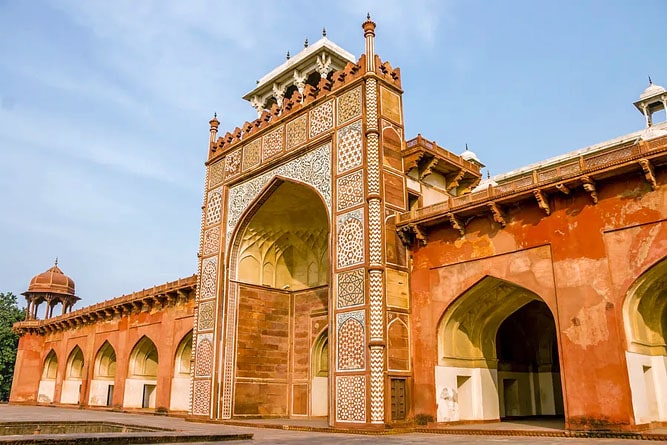
Architecture of Akbar’s Tomb
Surrounded by a lush green forest, Akbar’s tomb is a simulation of a small wildlife sanctuary. Animals like monkeys, peacocks and deers dwell in the forest that embraces the Mughal emperor’s tomb.
As you walk through the garden, you come across a significant and enormous gateway. This gateway is the centre of attraction of this historical site in Agra. The gateway is three stories tall crowned with four minarets at each corner. The walls of the gateway are ornate with red sandstones, along with marble stones of blue, yellow and white shades. The four minarets impersonate the structure of the chhatri at its top. The stones inlay the walls of the gateway in geometric and floral designs.
The interior walls of the gateway have patternless red sandstone. The tomb is further enclosed by a 105-metre wall. The wall is square-shaped. A pavilion through the gateway continues to the front facade of the tomb. The exterior walls of the tomb are like blank red pages. The main entrance of the burial chamber has geometric and floral designs portrayed on it.
An open corridor that runs around the tomb bestows the panoramic view of the garden. The tomb has Islamic inscriptions and Persian patterns but the art of arabesque patterns in the interior of the entrance arch enhances the aesthetic aura of the place. A hallway leads to the centre that shelters the cenotaph of Akbar. The room with its dome is plain and ordinary. The Cenotaph is made of marble. Underneath the mausoleum lies the grave of the late king.
The contrasting image of the structures of the mausoleum, the amalgamation of bare and basic with the enriched artistic design inspired the architectural theme for the future.
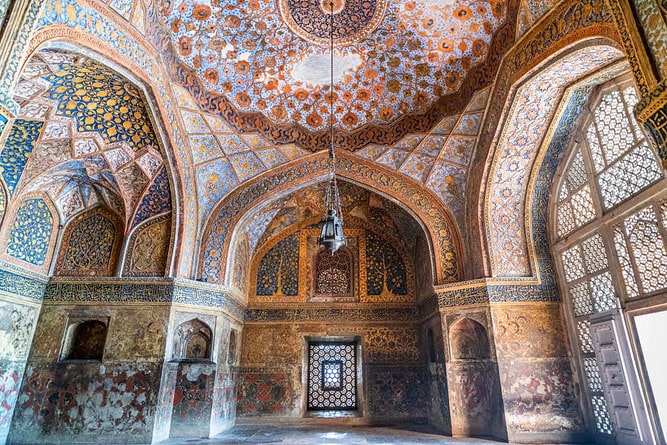
Entry fee and timings
The tomb of the great emperor, Akbar is open throughout the day from sunrise or 6:00 am to sunset or 6:00 pm.
Entry charges for tourists vary depending on nationality. For Indians, SAARC visitors and BIMSTEC visitors, the cost is ₹30 while for foreigners the price is ₹310.
Facts and tips about Akbar's Tomb
- The tombs of famous Islamic kings always face the direction of the Masjid of Mecca except for Akbar’s tomb which had been constructed to face the direction of the rising sun.
- The tomb was constructed under the supervision of the emperor himself until he passed away. Most of the tomb was completed during the lifetime of the king.
- You have to remove your footwear before entering the mausoleum. As you enter the tomb, you can hear the chant of ‘Allah-u-Akbar’ by a warden. Incenses are burnt and prayers are recited in the burial chamber of the tomb.
- While visiting the mausoleum, you need to provide a photocopy of your documents for identity verification.
How to reach Akbar's Tomb, Agra
Akbar's Tomb is situated in Sikandra, approximately 25 minutes by car from other famous monuments of Agra such as the Taj Mahal and Agra Fort.
See location on Google Maps
Other attractions near Akbar's Tomb, Agra
- Itimad-ud-Daulah (Baby Taj) - 11 km
- Taj Mahal - 14 km
- Agra Fort - 14 km
FAQs about Akbar's Tomb
1. Is there any place to eat near the tomb?
Yes, you will find food stalls near the premises. You are not allowed to carry food inside the premises. However, you can take water bottles.
2. What should you carry with you while visiting Akbar’s tomb?
If you visit in the summer months, carry sun protection like umbrellas and sunglasses. If you carry a bag or anything small with you, be careful as the area has many monkeys who could snatch things from your hand.
3. Where is Jodha Bai’s tomb located?
The tomb of Mariam-uz-Zamani is located just almost a mile away from Akbar’s tomb.
